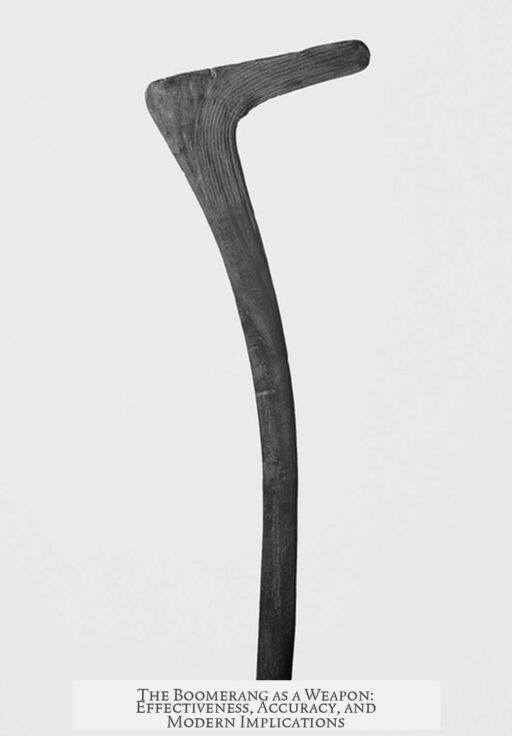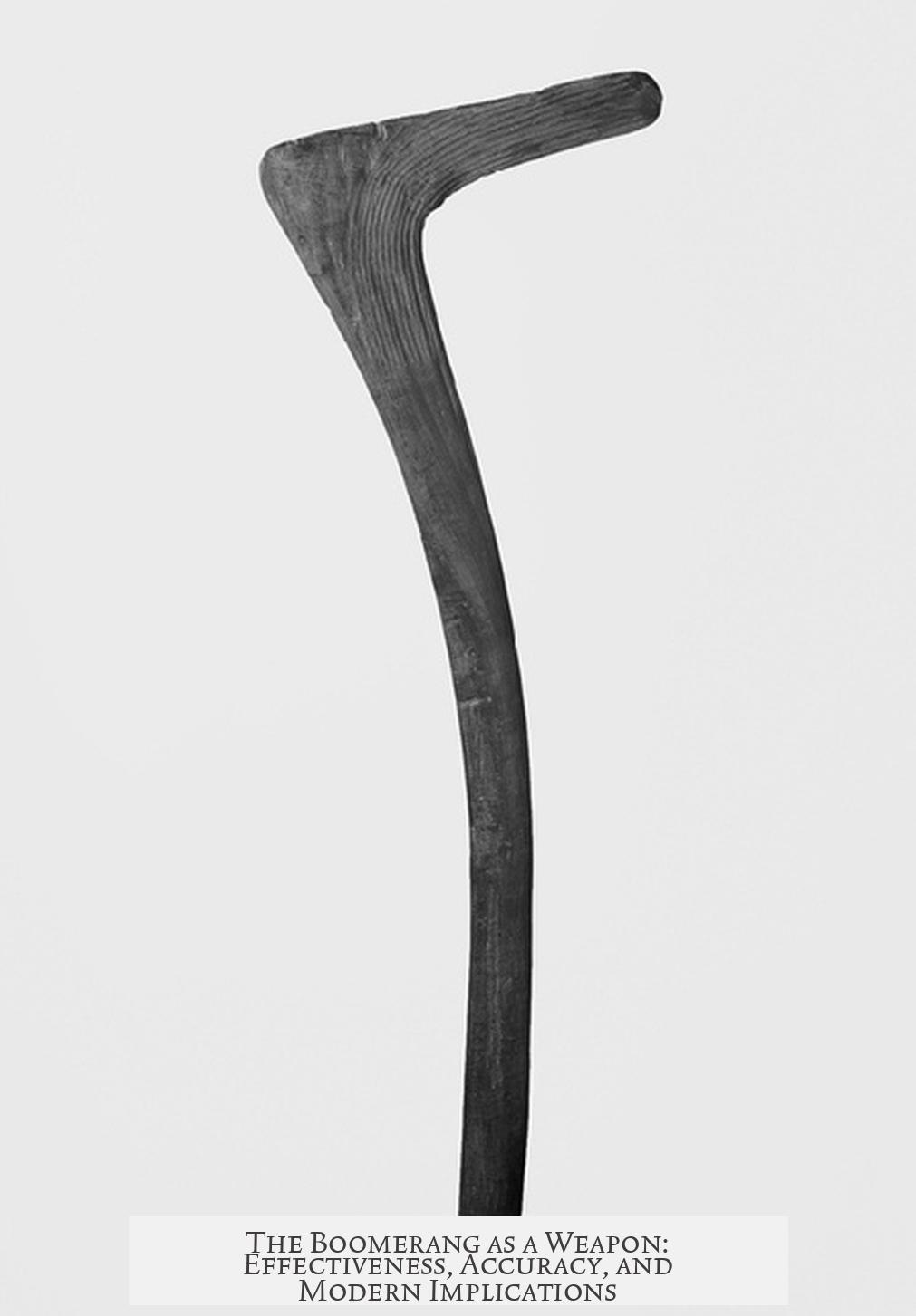The boomerang proves to be an effective weapon in terms of kinetic energy, impact force, range, and lethality. Skilled throwers deliver blows with over 100 joules of kinetic energy, comparable to strikes from heavy clubs, enough to cause casualties. Its narrow edge increases damage compared to blunt tools, while rotational energy adds to its harm.
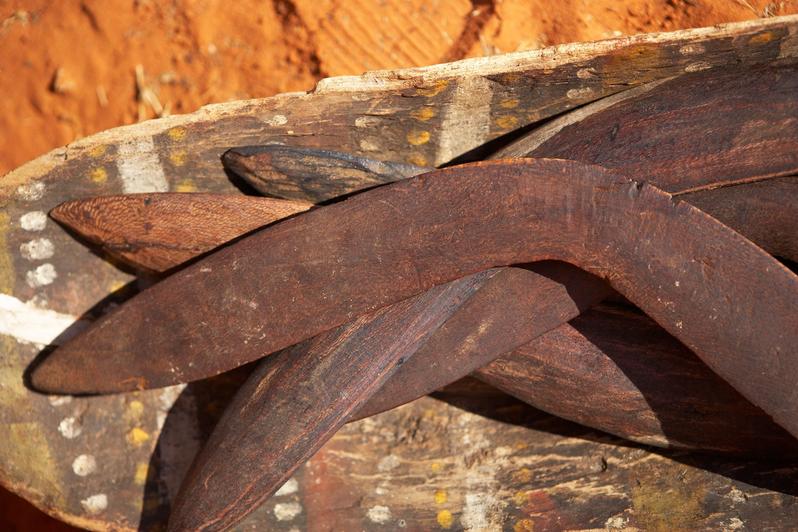
The boomerang’s range extends between 150 and 180 yards, flying low and skimming near the ground. At roughly 80 yards, it can deliver impacts similar to a heavy blunt sword hitting a tree trunk. This force makes it a formidable weapon against lightly clad human targets during combat or raids.
Used for hunting, the boomerang excels at taking down large game like emus and kangaroos. Hunters can strike at distances beyond 60 meters, benefiting from the boomerang’s straight, level flight path. This trajectory provides superior accuracy compared to conventional spears, increasing hit rates considerably.
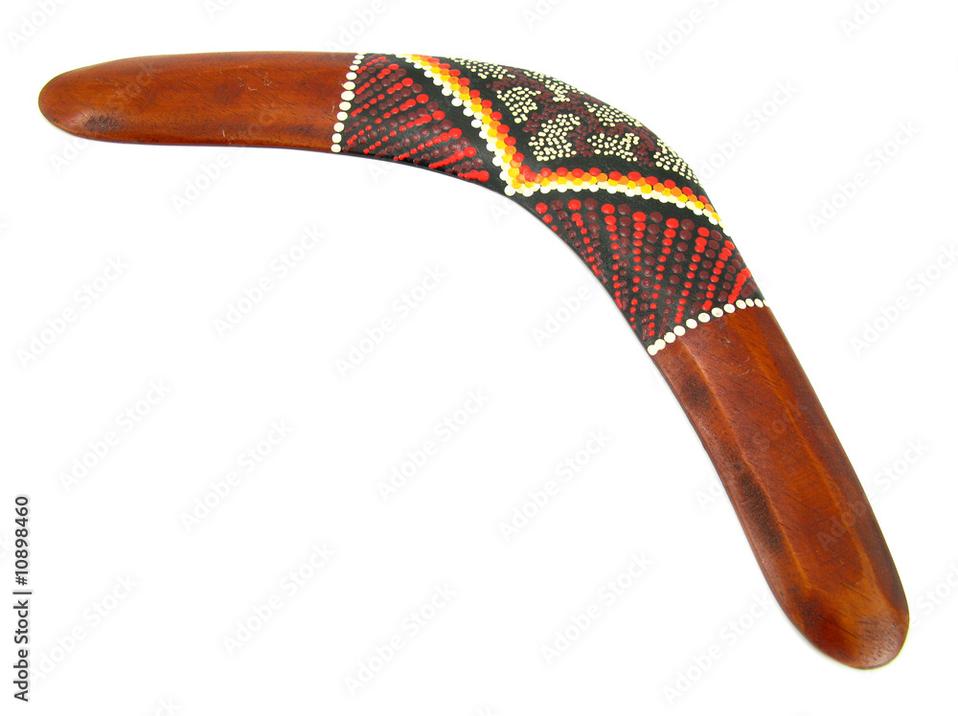
- The energy threshold to cause injury is around 80 joules, which the boomerang exceeds.
- Its edge, though not sharp like a blade, concentrates force on a smaller area, enhancing injury potential.
- Rotational kinetic energy adds to the overall damage when it strikes.
- Boomerangs and similar wooden weapons have left skeletal evidence consistent with fatal wounds.
While not as lethal as edged weapons, the boomerang delivers significant blunt force trauma effectively. Its ability to be thrown long distances with accuracy makes it useful both in hunting large animals and in combat. Rotational energy and narrowed impact surfaces enhance its damaging capabilities beyond typical clubs or blunt instruments.
| Aspect | Detail |
|---|---|
| Speed | 20 m/s or more |
| Kinetic Energy | Over 100 J (translation only) |
| Range | 150 to 180 yards |
| Effective Against | Large game, human targets |
| Injury Potential | Comparable to heavy blunt weapons |
- Kinetic energy over 100 joules causes severe impact injuries.
- The boomerang’s narrow edge improves damage delivery.
- Effective for hunting and ranged combat due to accuracy and force.
- Confirmed lethal use by archaeological evidence.
How Effective Was the Boomerang as a Weapon?
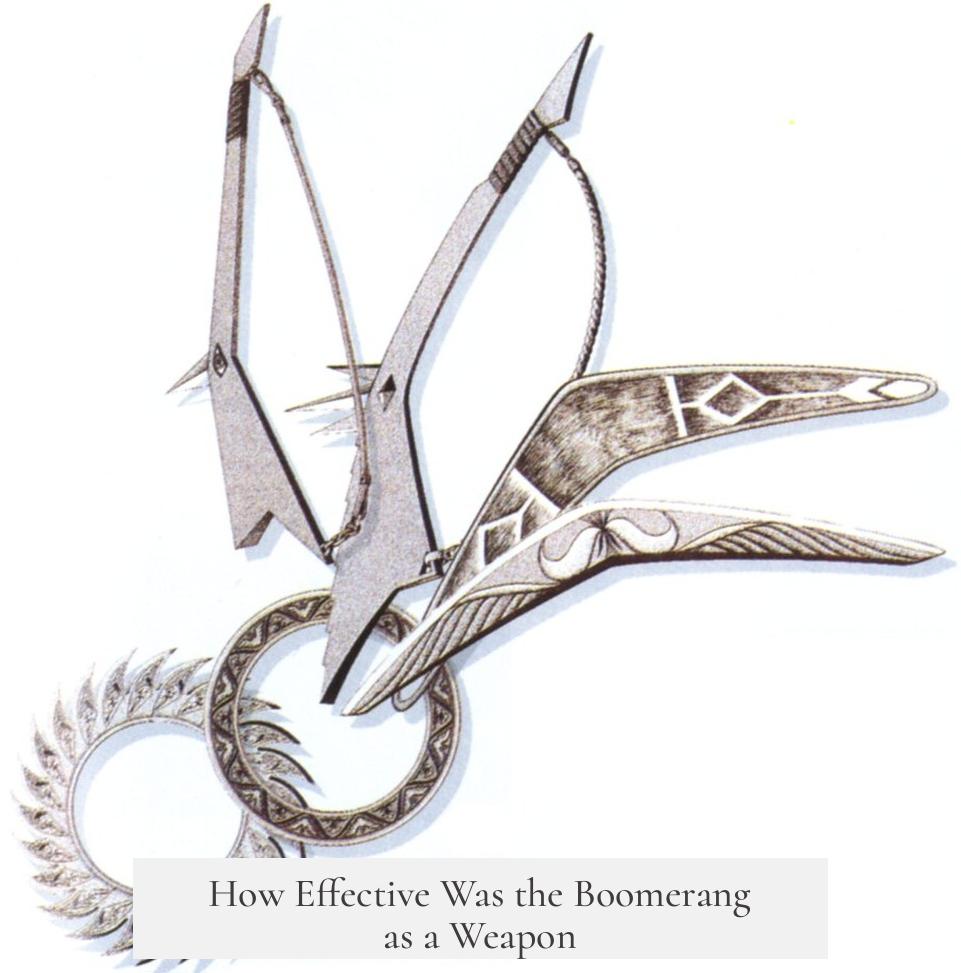
In short, the boomerang was quite an effective weapon in its time, especially as a blunt-force tool with surprising power and accuracy. It delivered over 100 joules of kinetic energy and could incapacitate both prey and opponents from impressive distances.
That’s right — this ancient flying tool wasn’t just a playful toy or a cultural symbol; it served as a serious instrument of survival and combat.
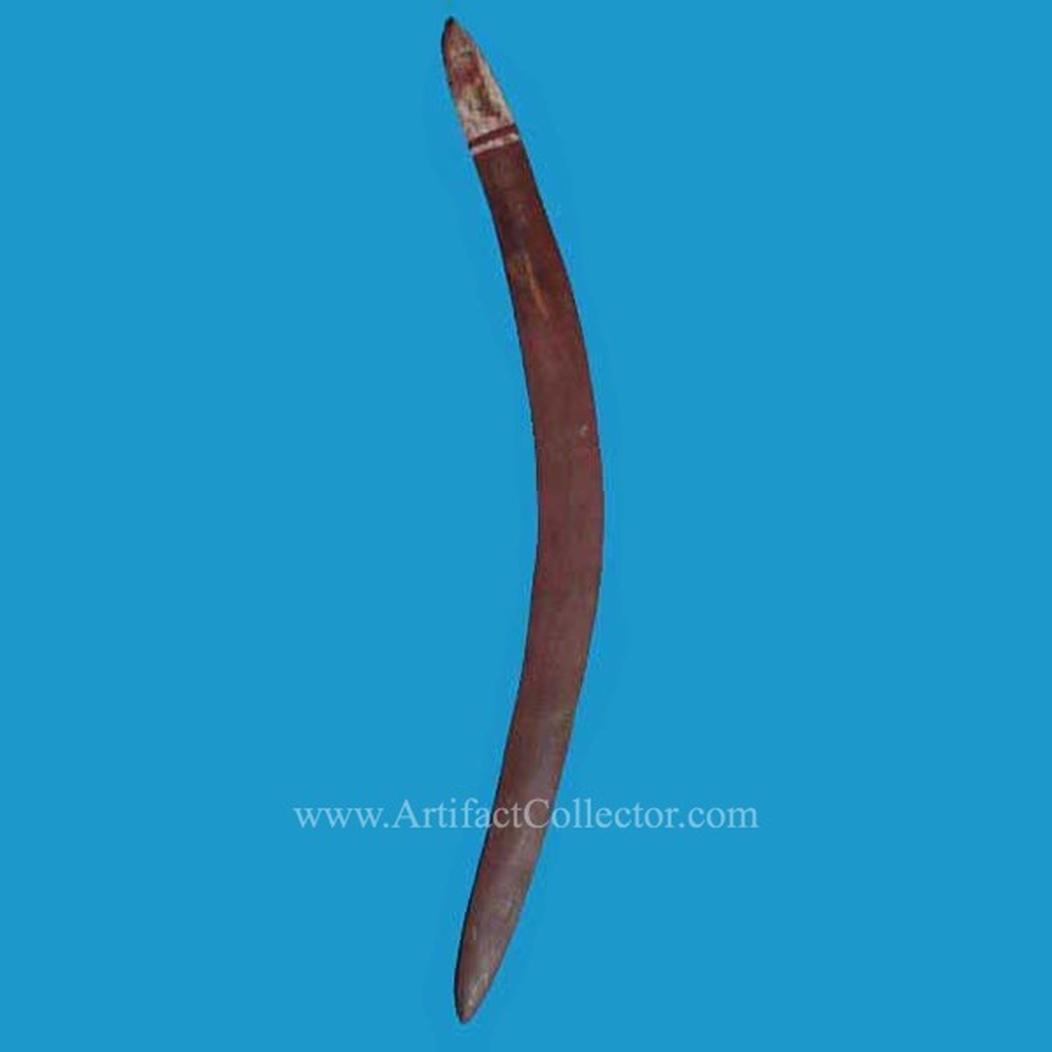
The Science Behind the Boomerang’s Punch
At first glance, a wooden, curved stick might not scream “deadly weapon,” but don’t underestimate the boomerang’s kinetic impact. An experienced thrower can hurl one at speeds exceeding 20 meters per second, generating more than 100 joules of translational kinetic energy. To put that in perspective, that’s as powerful as a heavy club strike. It’s less lethal than a sword’s blade, but much nastier than a wide-blunt object like a hammer. Why? Because the boomerang’s edge is narrow, concentrating the impact force on a smaller area, making it comparable to a blunt sword strike rather than a broad hammer blow.
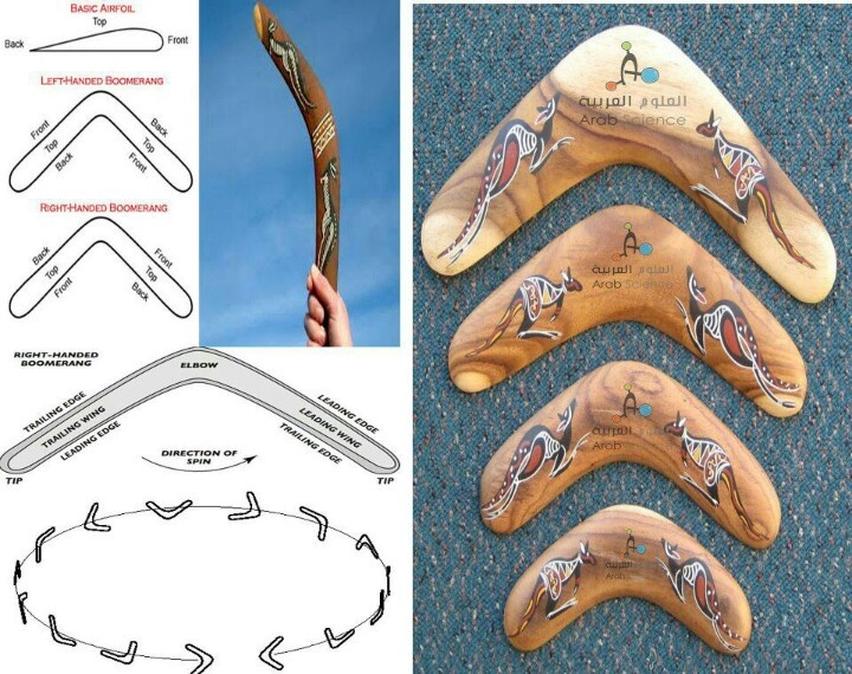
Besides, the boomerang doesn’t just rely on translational energy — it spins mid-air, adding rotational kinetic energy to the mix. This spinning motion wraps extra power into each hit. When it connects, the boomerang’s edge slices through the air and flesh with a brutal efficiency that would surprise anyone assuming it was only a simple throwing stick.
Range and Its Deadly Accuracy
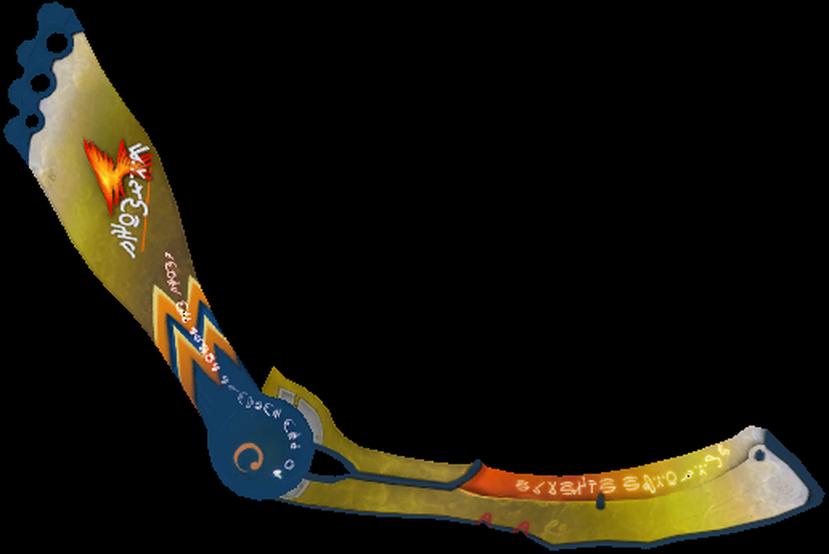
How far can a boomerang go? Well, it skims low over terrain, keeping a rather flat and straight flight path over impressive distances of 150 to 180 yards. That’s about the length of one and a half football fields. And don’t overlook how it delivers almost sword-like impact power at 80 yards. Imagine being struck by a heavy door hitting you at nearly half a football field away. Ouch.
The boomerang’s level flight gives it an edge over other projectile weapons of its age, especially spears, which might arc arcing and land clumsily. Its consistent trajectory enhances accuracy, a critical factor when hunting or fighting.

Hunting Large Prey — Not Just Target Practice
Here’s a fun fact: big game hunters once brought down emus and kangaroos with boomerangs, striking from ranges beyond 60 meters. That’s no small feat. The weapon’s straight flight path made it more reliable than the spears, which could miss or lose force at distance.
These boomerangs were heavy, narrow-edged hunters’ weapons that could knock down large animals or cause serious damage. Skeletal evidence even shows injuries matching strikes from boomerang-like clubs, proving their lethal use.
Effect on Humans: Not Just a Myth
In a scenario where warriors wore minimal armor or clothing, a boomerang’s impact would be devastating. The weapon’s concentrated energy could cause deep bruises, break bones, or cause enough trauma to stop an opponent. It’s easy to imagine the terror factor when seeing one flying straight at you, whirring as it cuts through the air.
While it lacked the cutting sharpness of metal blades, the blunt force trauma and the surprise factor of a returning or near-returning projectile made it effective. This also allowed combatants to re-claim their thrown weapons, removing the need to carry multiple projectiles.
So, How Does It Stack Up to Other Weapons?
Compared to clubs, boomerangs delivered similar energy. Compared to swords, less so. However, its edge concentration and rotation add punch that even a broad club doesn’t possess. Additionally, the boomerang’s unique capability arose from its combination of speed, flight dynamics, and reusability.
Let’s put it plainly: you might not want to challenge a boomerang user to a duel, especially if you only have your bare fists.
Modern Takeaways and Surprises
Ever wonder why the boomerang fascinates people worldwide? It’s more than a cultural emblem — it’s a brilliant weapon design. Today, boomerangs are mostly sport or art. But ancient warriors depended on these sharp-flying tools to survive and thrive.
Imagine harnessing the physics of flight naturally through handcraft. That’s some serious ancestral engineering right there.
“The boomerang’s blow at 80 yards would feel like a heavy blunt sword striking a tree trunk.”
Practical Tips: Could You Use a Boomerang as a Weapon Today?
- If you want to try throwing, practice with a non-returning hunting boomerang design. The returning types aren’t built for heavy impacts.
- Focus on speed and angle of release; a skilled thrower achieves over 20 m/s velocity.
- Wear protective gear during practice — no weapon is harmless in the wrong hands.
Attempting to replicate ancient hunting or fighting techniques offers insights into early human innovation and survival strategies. Plus, it’s a fun party trick. “Watch me knock down that bottle with a blunt wooden boomerang!”
Final Thoughts: Was the Boomerang a Serious Weapon?
In conclusion, the boomerang was truly an effective blunt weapon. The considerable kinetic energy, narrow strike edge, and range made it a formidable tool for hunting and warfare. It could injure or kill large animals and humans alike, all while being reusable and highly accurate.
So, when you next see a boomerang, remember — it’s not just a toy that comes back. It’s a flying piece of history that once ruled the battlefield and hunt grounds with quiet but undeniable power.
